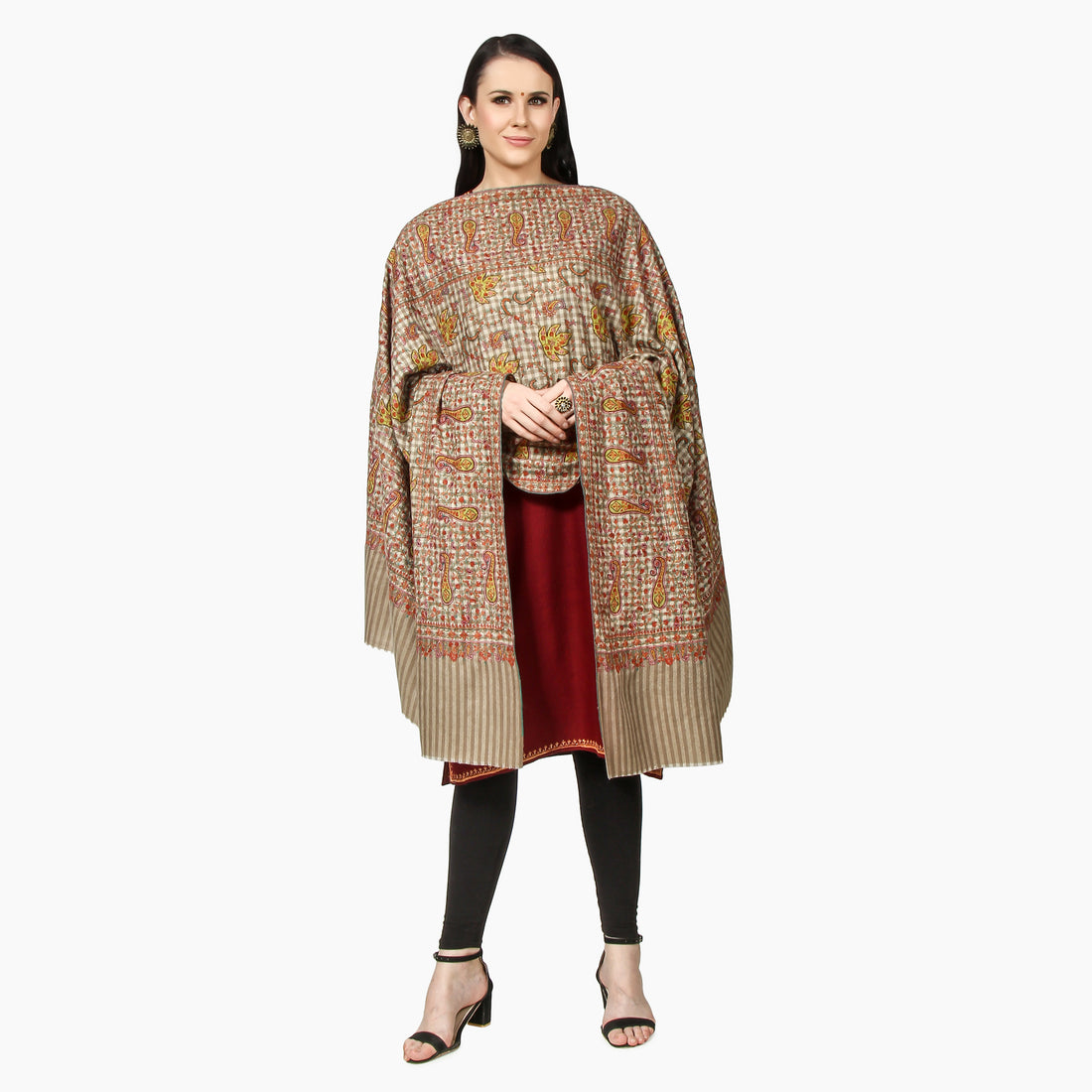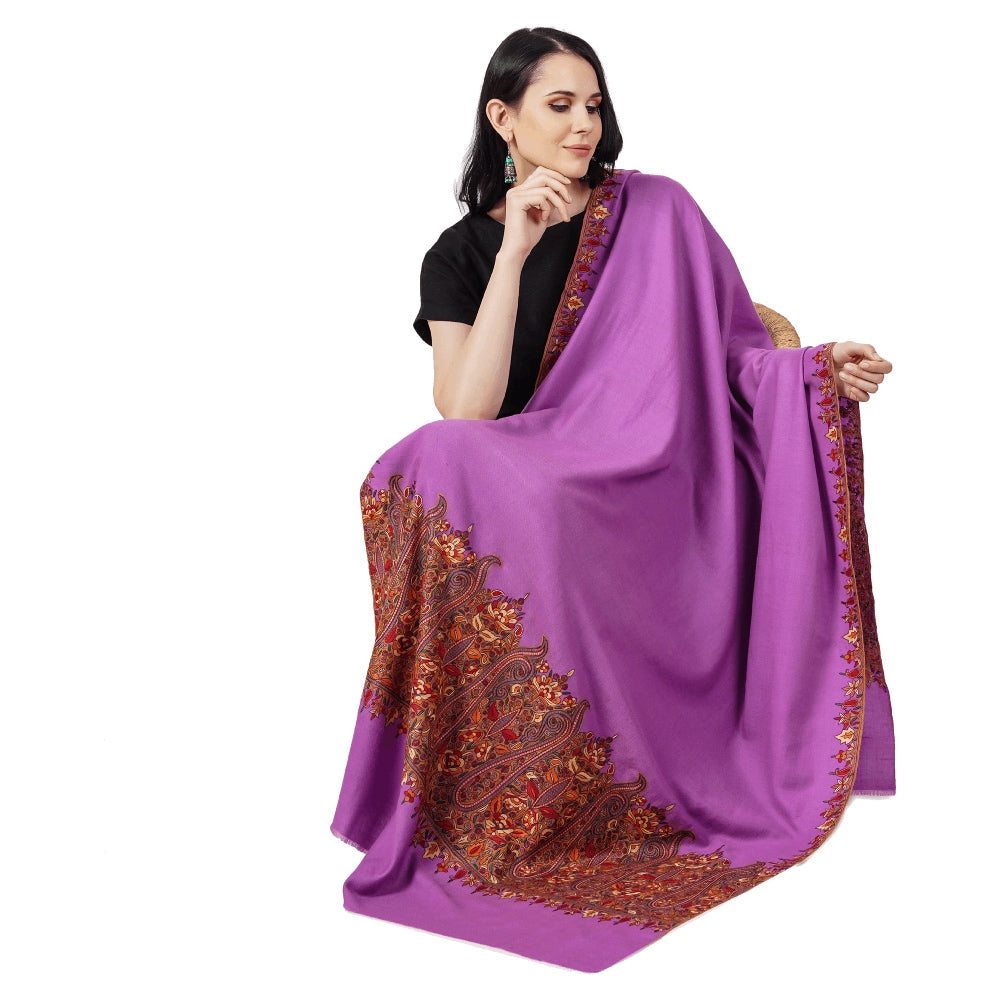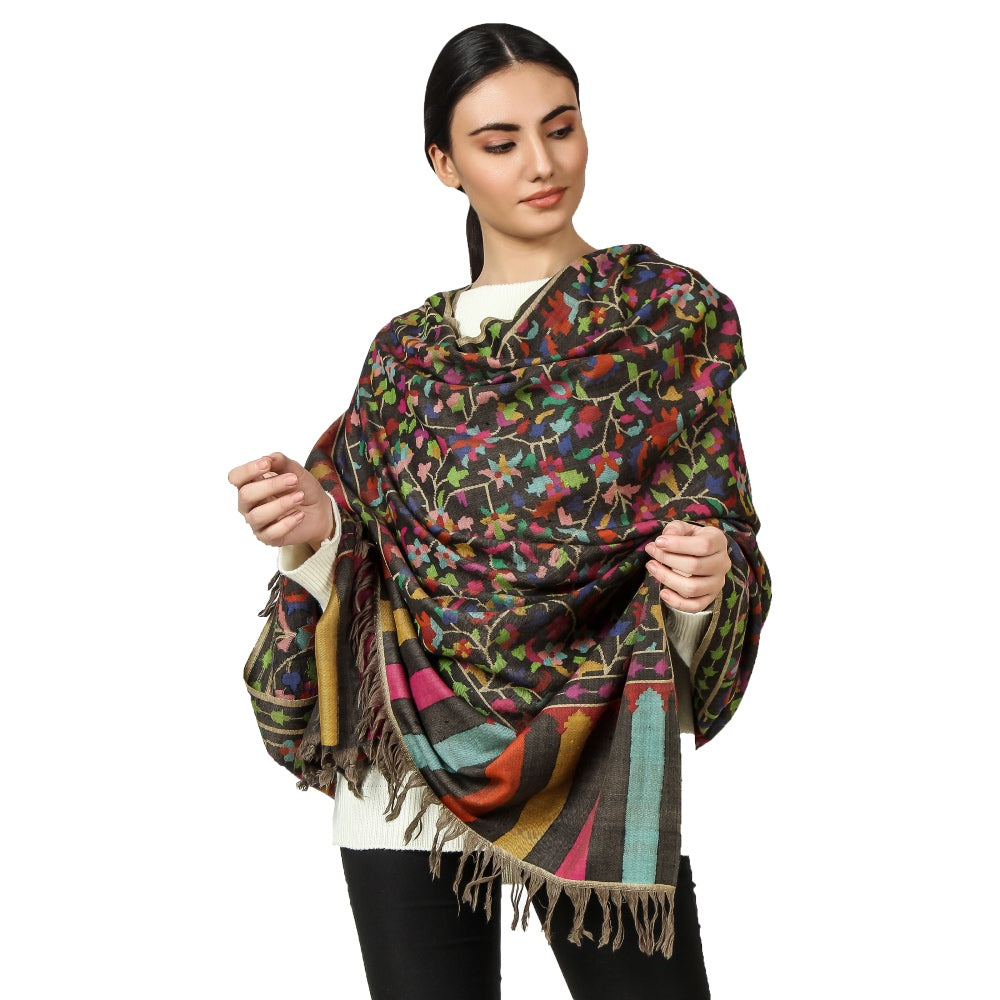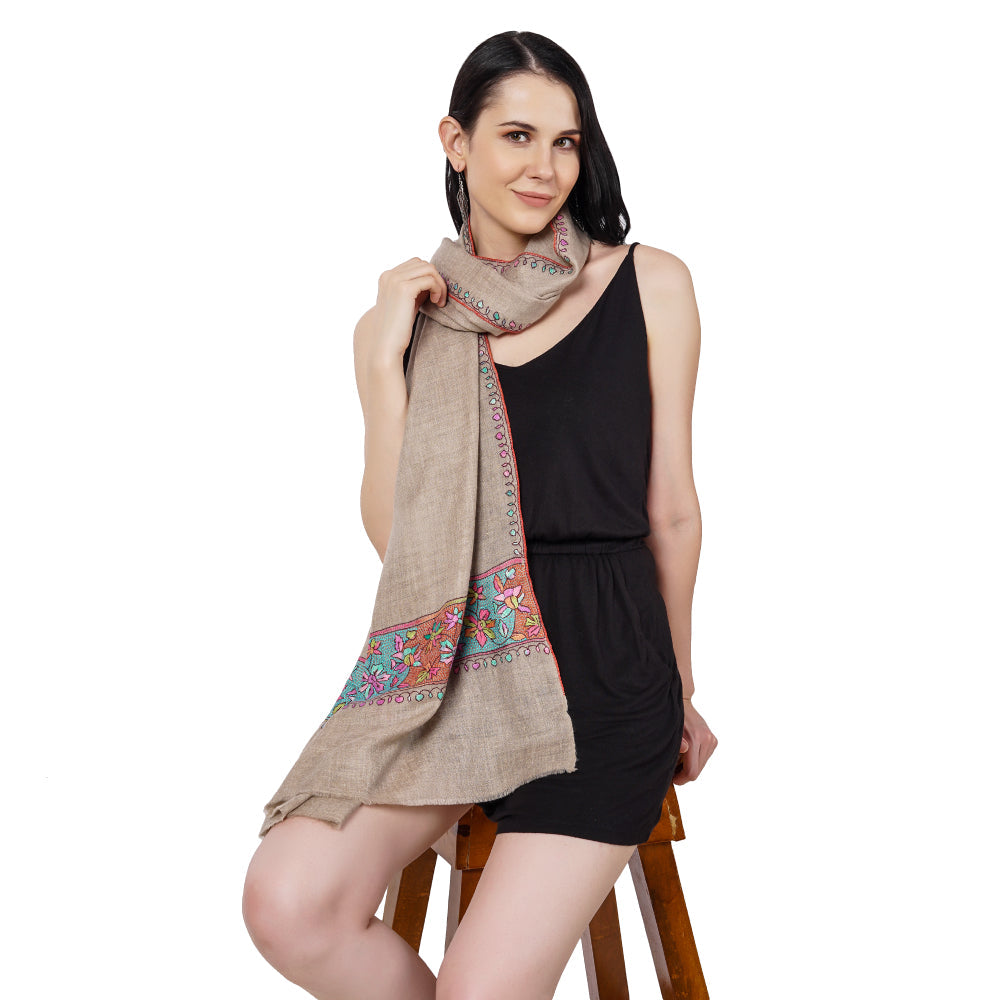
Finest Cashmere: The Art of Traditional Production Techniques and Ethical Practices in the Fashion Industry
Share
Cashmere is a type of wool that is obtained from the Cashmere goat, a breed that is primarily found in the Himalayan regions of Kashmir, Nepal, China and Mongolia. It is known for its exceptional softness, warmth, and lightweight texture.
Brief history of Cashmere:

Cashmere is a luxury textile fiber that is obtained from the soft undercoat of the Cashmere goat. The fiber is known for its exceptional softness, warmth, and lightness, and is highly valued in the fashion industry. The origins of Cashmere can be traced back to the Kashmir region in India, where it was first woven into shawls and other luxury items. The production of Cashmere eventually spread to other parts of Asia, including Mongolia, China, and Tibet, where the Cashmere goat is still primarily raised today. In the 19th century, Cashmere became popular in Europe, and a thriving industry developed in Scotland, where the production of Cashmere garments became a major source of employment for local communities. Today, Cashmere is used in a wide range of luxury products, including sweaters, scarves, blankets, and other accessories, and is considered a symbol of quality and sophistication in the fashion industry.
Also read: A Journey through time : The History of Pashmina Shawls
Importance of Cashmere in the fashion industry:
 Cashmere plays a significant role in the fashion industry as a luxury textile fiber that is highly valued for its softness, warmth, and lightweight feel. Cashmere garments are considered a symbol of quality and sophistication, and are often associated with high-end fashion brands and luxury designers. The unique properties of Cashmere make it a versatile material that can be used in a wide range of products, including sweaters, scarves, hats, gloves, blankets, and other accessories. Cashmere products are sought after by consumers who are willing to pay a premium price for the exceptional quality and craftsmanship that goes into their production. In addition to its aesthetic appeal, Cashmere also has practical benefits, such as its ability to provide insulation and regulate body temperature, making it a popular choice for cold weather clothing. Overall, Cashmere is an important part of the fashion industry, representing the highest levels of quality and luxury in textile manufacturing.
Cashmere plays a significant role in the fashion industry as a luxury textile fiber that is highly valued for its softness, warmth, and lightweight feel. Cashmere garments are considered a symbol of quality and sophistication, and are often associated with high-end fashion brands and luxury designers. The unique properties of Cashmere make it a versatile material that can be used in a wide range of products, including sweaters, scarves, hats, gloves, blankets, and other accessories. Cashmere products are sought after by consumers who are willing to pay a premium price for the exceptional quality and craftsmanship that goes into their production. In addition to its aesthetic appeal, Cashmere also has practical benefits, such as its ability to provide insulation and regulate body temperature, making it a popular choice for cold weather clothing. Overall, Cashmere is an important part of the fashion industry, representing the highest levels of quality and luxury in textile manufacturing.
Also read: How can you tell if Cashmere is real?
The Cashmere Goat
Origin and habitat of the Cashmere goat:
The Cashmere goat, also known as the Kashmir goat, is believed to have originated in the Kashmir region of India, where it was first raised for its luxurious undercoat. Today, the Cashmere goat is primarily raised in parts of Himalayan region of Kashmir's Ladakh, Central and East Asia, including Mongolia, China, Iran, Afghanistan, and Tibet. The goat is well adapted to the harsh, mountainous environments of these regions, and is able to thrive in areas with limited vegetation and extreme temperature fluctuations. Cashmere goats are a hardy breed, known for their long, flowing hair and distinctive curled horns. They are typically raised in small herds by nomadic or semi-nomadic herders, who rely on their milk and meat as well as their valuable cashmere fibers. The goats are well suited to their environments, able to survive on sparse vegetation and withstand harsh winter conditions. They are an important part of the local economy in many regions, and the production of Cashmere fibers provides an important source of income for communities in these areas.
Physical attributes of the Cashmere goat:
The Cashmere goat is a medium-sized breed of domestic goat, known for its long, soft, and luxurious cashmere fiber. They have a distinctive appearance, with long, flowing hair that grows in thick locks and curls. The hair can range in color from white to shades of brown, gray, and black. The Cashmere goat has a sturdy, well-muscled body, with strong legs and hooves that are adapted for rugged, mountainous terrain. They have a broad head with a straight profile, and distinctive curved horns that are usually present in both males and females. Cashmere goats are also known for their gentle disposition, and are generally easy to handle and care for. They are able to thrive in harsh environments with limited vegetation, and are able to withstand extreme temperature fluctuations, making them well suited to their native habitats in Central and East Asia. Overall, the Cashmere goat's distinctive physical attributes make it a valuable source of luxury fibers for the fashion industry, and an important part of the local economies in many regions where they are raised.
Cashmere harvesting process:

The process of harvesting Cashmere fiber from the Cashmere goat is a time-intensive and delicate process that requires skill and experience. Here are the steps involved in the Cashmere harvesting process:
-
Seasonal shearing: The Cashmere fiber is harvested during the spring season, typically in April or May, after the winter coat has grown and before the hot summer weather arrives. During this time, the goats are sheared using a sharp comb or scissors to remove the long, fine hair from their undercoat.
-
Sorting: After the shearing process, the Cashmere fibers are sorted by hand to separate the soft undercoat fibers from the coarser guard hairs. This is typically done by skilled artisans who carefully sort through the fibers to remove any debris or unwanted materials.
-
Cleaning: Once the fibers have been sorted, they are washed in cold water to remove any remaining dirt or debris. This process is essential to maintain the quality and purity of the Cashmere fibers.
-
Spinning: After the fibers have been cleaned and dried, they are spun into yarn using a traditional spinning wheel or machine. This process is critical to create a uniform and consistent yarn that is suitable for weaving or knitting into garments.
-
Weaving or Knitting: The Cashmere yarn is then woven or knitted into a range of luxury products, including sweaters, scarves, blankets, and other accessories. This is typically done by skilled artisans who use traditional techniques to create high-quality, handcrafted products.
Overall, the Cashmere harvesting process requires a great deal of skill and attention to detail to produce high-quality, luxurious fibers that are valued in the fashion industry. From the seasonal shearing to the final weaving or knitting of the finished product, the process involves the work of skilled artisans who are dedicated to preserving the traditional techniques and craftsmanship that are associated with this luxury material.
Artisans and their role in the Cashmere Industry
Role of Artisans in Cashmere production:
Artisans play a crucial role in the Cashmere industry, as they are responsible for spinning, weaving, and finishing the fabric by hand. This gives Cashmere its unique texture and quality.
Skills required by Cashmere Artisans:
Cashmere artisans require a range of skills, including weaving, spinning, and dyeing. They also need to have a good eye for color and texture and be able to work with precision and attention to detail.
Training of Cashmere Artisans:
Cashmere artisans often undergo extensive training to develop their skills. Many traditional techniques have been passed down from generation to generation, and artisans may spend years perfecting their craft.
Sustaining the Cashmere Industry
Environmental concerns in Cashmere production:
Cashmere production can have significant environmental impacts, particularly in regions where the goats are raised. Here are some of the environmental concerns associated with Cashmere production:
-
Overgrazing: Cashmere goats require a significant amount of grazing land, and in some regions, overgrazing can lead to soil erosion, loss of vegetation, and desertification. This can have serious long-term impacts on the ecosystem, including reduced biodiversity, reduced water availability, and increased soil degradation.
-
Water Use: Cashmere production requires significant amounts of water, particularly during the washing and processing stages. In regions with limited water resources, this can exacerbate existing water scarcity issues, leading to increased competition for resources and potential conflicts.
-
Chemical Use: Some Cashmere processing techniques involve the use of harsh chemicals, which can have negative impacts on the environment and human health. These chemicals can contaminate water sources, harm wildlife, and have long-term impacts on soil quality.
-
Carbon Footprint: Cashmere production and transportation also have a significant carbon footprint, contributing to climate change and other environmental impacts. The transportation of Cashmere products around the world can also contribute to greenhouse gas emissions and other environmental impacts.
Overall, there are significant environmental concerns associated with Cashmere production, particularly in regions where the goats are raised. However, efforts are being made to reduce the environmental impact of Cashmere production through sustainable grazing practices, improved water management, and the use of more environmentally-friendly processing techniques. As consumers, we can also play a role in supporting sustainable Cashmere production by choosing products that are certified as environmentally-friendly and responsibly sourced.
Role of ethical practices in the Cashmere Industry:
Ethical practices play a critical role in the Cashmere industry, both in terms of ensuring animal welfare and promoting sustainable production practices. Here are some of the ways in which ethical practices are promoted in the Cashmere industry:
-
Animal Welfare: The ethical treatment of Cashmere goats is essential to ensuring the sustainability of the industry. This includes ensuring that the animals are treated humanely, with access to clean water, adequate food, and proper shelter. It also includes avoiding overgrazing, which can harm the animals and the environment.
-
Sustainable Production: The Cashmere industry is working to promote sustainable production practices, such as using regenerative grazing practices to protect soil health and biodiversity, reducing water usage and improving water quality, and minimizing the use of harsh chemicals.
-
Fair Labor Practices: Ethical practices also extend to ensuring fair labor practices in the Cashmere industry, such as providing safe working conditions, fair wages, and access to education and training for workers.
-
Traceability: Many companies are now promoting traceability in the Cashmere supply chain, allowing consumers to track the origin of the materials and ensuring that they are ethically and sustainably sourced.
By promoting ethical practices in the Cashmere industry, companies can not only ensure the long-term sustainability of the industry but also meet the growing demand from consumers for environmentally-friendly and socially responsible products. As consumers, we can support ethical practices in the Cashmere industry by choosing products that are certified as ethically and sustainably sourced and by supporting companies that prioritize animal welfare and environmental sustainability.
Also read: Is Pashmina and Cashmere the same?
Economic importance of the Cashmere industry:
The Cashmere industry is economically important to many countries around the world, particularly those in Asia where Cashmere goats are raised and Cashmere is traditionally produced. Here are some of the ways in which the Cashmere industry contributes to the global economy:
-
Employment: The Cashmere industry provides employment opportunities for millions of people, particularly in rural areas where jobs are scarce. This includes farmers, herders, spinners, weavers, and other artisans who are involved in the production process.
-
Export Revenue: Cashmere is a valuable export commodity, and many countries rely on it as a significant source of export revenue. For example, Mongolia is one of the world's largest producers of Cashmere and relies heavily on Cashmere exports for its economic growth.
-
Value-added Production: Cashmere production also involves value-added processes, such as spinning, weaving, and dyeing, which create additional economic value and support a range of skilled jobs.
-
Tourism: The Cashmere industry can also support tourism, particularly in regions where Cashmere is produced. Visitors may be interested in seeing the production process firsthand or purchasing Cashmere products directly from local artisans.
Overall, the Cashmere industry plays an important role in the global economy, providing employment opportunities, generating export revenue, supporting value-added production, and contributing to the tourism sector. However, it is essential to ensure that the industry operates in a socially and environmentally responsible manner to ensure its long-term sustainability and economic viability.
Popular Cashmere brands
-
Loro Piana: This Italian brand is known for its luxurious Cashmere products, which are sourced from Mongolia and other regions known for their high-quality Cashmere.
-
The Elder Statesman: This Los Angeles-based brand is known for its modern and colorful Cashmere designs, which are handcrafted by skilled artisans in the USA.
-
Naadam: This sustainable fashion brand focuses exclusively on Cashmere, working directly with herders in Mongolia to ensure ethical and sustainable production practices.
-
White + Warren: This New York-based brand is known for its timeless and classic Cashmere designs, which are made from sustainably-sourced Cashmere and produced in a socially responsible manner.
-
Brunello Cucinelli: This Italian brand is known for its high-end Cashmere products, which are handcrafted by skilled artisans in Italy using sustainable production practices.
-
Everlane: This popular ethical fashion brand offers a range of sustainably-produced Cashmere products at affordable prices, sourcing its Cashmere from Mongolia and China.
-
The Cashmere Shop: This Canadian-based brand offers a range of high-quality Cashmere products, including sweaters, scarves, and accessories, which are made from ethically-sourced Cashmere and produced in a socially responsible manner.
- Pashwrap: Pashwrap is a unique and innovative brand that offers a range of luxurious Cashmere wraps and scarves, handcrafted by skilled artisans in Kashmir using traditional techniques. What makes Pashwrap stand out is its commitment to sustainability and social responsibility. The brand uses only the finest quality Cashmere, sourced from the Changthang Plateau in Ladakh, and works closely with local communities to support ethical and sustainable production practices. Pashwrap also donates a portion of its profits to charitable organizations that support education and healthcare initiatives in Kashmir. With its focus on quality, craftsmanship, and social responsibility, Pashwrap offers a truly special Cashmere experience for discerning consumers.
Overall, there are many popular Cashmere brands that prioritize ethical and sustainable practices, offering consumers a range of high-quality and environmentally-friendly Cashmere products to choose from.
Also read: 10 reasons to buy a Cashmere Scarf now
Conclusion
Cashmere is a luxury material that is highly valued in the fashion industry. It is obtained from the Cashmere goat and is known for its exceptional softness and warmth. Artisans play a crucial role in the production of Cashmere, using traditional techniques to create high-quality fabrics. The industry has faced some environmental and ethical challenges, but many companies are working to promote sustainable and ethical practices.
The Cashmere industry has a rich history and continues to be an important source of income for many communities in the Himalayan regions. By promoting sustainable and ethical practices, the industry can continue to thrive while minimising its environmental impact.
The future of the Cashmere industry looks promising, with many companies working to promote sustainability and ethical practices. As consumers become more conscious of the impact of their purchasing decisions, there is a growing demand for high-quality, ethically produced Cashmere products.






